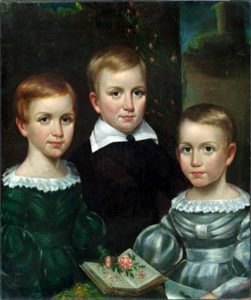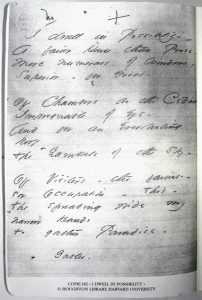
The poetic oeuvre of Emily Dickinson (1830-1886), nearly a thousand poems, was discovered by her sister Lavinia when Emily died, and places her in the American Parnassus alongside Edgar Allan Poe and Walt Whitman. During her lifetime, Emily Dickinson published only a handful of poems, and then only anonymously, although she often included them in her abundant correspondence with friends and relatives. Although she lived many decades before the quantum revolution began, the first line of one of her poems could well have been chosen by Bohr or Heisenberg as the motto of the quantum world: “I dwell in Possibility”. In Dickinson’s poem, “Possibility” is a metaphor for poetry, and not so much for the power or occasion to exist, or for what, in terms of actual existence, the measure of its possibility – probability – means. But this does not diminish the suggestion in that verse of the revolution that the quantum has brought to science – and which was so upsetting to Albert Einstein, our admired sarcastic Einstein1, Einstein2–. Here is the complete poem:
I dwell in Possibility –A fairer House than Prose –More numerous of Windows –Superior – for Doors –Of Chambers as the Cedars –Impregnable of eye –And for an everlasting RoofThe Gambrels of the Sky –Of Visitors – the fairest –For Occupation – This –The spreading wide my narrow HandsTo gather Paradise –


Leave a Reply